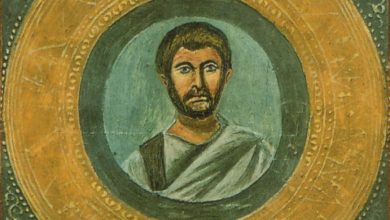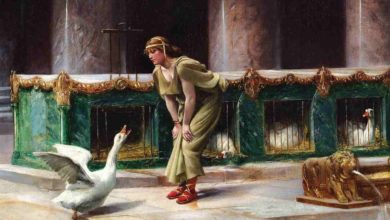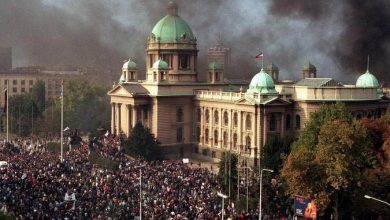Romania After the Revolution: The Difficult First Ten Years of Freedom

In recent years, one may have heard of the troubling events happening in Romania. Similarly to the situation in many other Central and Eastern European countries, Romanian civil society has staged a number of significant protests centred around upholding the rule of law and fighting corruption. The origins of these demands in the country date back to 1989, the year in which Nicolae Ceaușescu’s dictatorship and, subsequently, the Socialist Republic of Romania collapsed. To understand the difficult situation which Romania faces today, it is fundamental to understand the links that today’s society has with the revolution that happened.
Ceaușescu is overthrown
In mid-December 1989, the first inklings of civil unrest made themselves heard against Romania’s communist rule. The spark that lit the revolution was the public protest held by the Hungarian minority of Timișoara, in western Romania, against the attempted eviction of a Hungarian pastor who had criticised the regime in a TV interview. A huge uprising subsequently broke out in the city a day after, on the 17th December, and the police opened fire, killing approximatively 100 people.
In an attempt to placate the rising unrests and re-establish control over the country, on the 21st December Ceaușescu addressed a support rally of over 100,000 people, many of whom were workers that had been brought in to attend this assembly under threat of being fired. This decision backfired: two minutes into his speech, the crowd started turning against him and eventually developed into a full-fledged riot.
Ceaușescu was forced to hide and later flee when the entire city began to rise against the regime forces and its infamous political police, the Securitate. Ceaușescu and his wife fled the capital on the 22nd of December, but were captured not too long after that. After a show-trial on the 25th of December, the dictator and his wife were executed by a firing squad, marking the end of 42 years of Communist rule.
Although it had developed and culminated in just a few days, the Romanian revolution witnessed a regular use of disinformation tools by regime forces, with Securitate agents and officials attempting to create a wind of panic within the country and turn fighting groups against each other. Additionally, confusion amongst the military due to contradictory orders in the days following Ceaușescu’s fleeing vastly contributed to the death toll of the revolution. By the time the violence ended, over a thousand people had lost their lives.

After the Revolution
With Ceaușescu’s flight from Bucharest, political organisations started to rise from the underground. One movement in particular quickly became the main political actor leading the aftermath of the revolution. The FSN (Frontul Salvării Naționale or National Salvation Front) was composed of several high-ranking members of the existent Romanian Communist Party who had been vocal in their opposition to Ceaușescu since before the revolution.
The FSN was quick to establish an interim government, led by Ion Iliescu as president and Petre Roman as the Prime Minister. On the 27th of December, with the violence finally placating, Ion Iliescu, a former friend of the Ceaușescu couple and an important official within the Romanian Communist Party, announced the abolition of the one-party system and called for free elections, to be held in May. These would be the first free elections Romania would have since 1937.
The FSN Government
The FSN had originally promised not to stand in the May 1990 presidential and legislative elections. Despite this, in February the organisation registered as a political party, and by May they stood as a united front with a number of election candidates picked from the high-ranking officials of the former Socialist Republic. Iliescu, leading candidate for the presidency, insisted that the country had to move forward rather than focus on investigating the crimes of the former leaders. On the other hand, transitional justice was something that was strongly demanded by the other political parties that had emerged from the ashes of the revolution.
FSN knew that to win the elections they would have to portray themselves as something the people were familiar with. Iliescu used his charisma to be seen as a man close to the Romanian people. The party had no strong organised opposition running against them at the time and could boast the support of much of the international community. It thus came to no surprise that he was elected president with more than 85% of the votes and that FSN won a majority in both chambers of the Romanian Parliament, with Petre Roman remained Prime Minister, and its government started cautious economic reforms. With almost no opening on the rest of the world before 1990, Romania had, at the time, a severe lack of political culture.
The overwhelming support for the FSN would not last. While anti-Communist protests had already begun (or better, had never stopped) during the FSN’s interim government, the elections caused an uptick in civil unrest. Attacks against the government started at the hands of both the newly formed opposition parties and of the young generation and educated people, who had had a small taste of what it was freedom was like in most western European countries and liberal democracies. The violence of the demonstrations escalated in June 1990 during the so-called Mineriad.

The Mineriad
Discontent against the continuation of the former Romanian Communist Party under another name, on the 22nd of April 1990 opposition parties and students organised a peaceful demonstration and march in Bucharest. The goal was to ensure an investigation in the events which had taken place during the revolution, the political independence of the Romanian Television station, and to ban all former members of the Romanian Communist Party from the new government. The demonstration soon became a sit-in that would last for over a month.
The numbers of demonstrators dropped after the FSN’s May victory, but many remained. The government attempted to negotiate, but on June 11th, the sit-in turned violent due to dissatisfaction over the results of these negotiations. Rioters attacked the government’s palace, and the police, military forces and army were called in to contain the violence. This uninterrupted protest between April and June 1990, led by university teachers and students, would become known as the Golaniad.
In order to clear out the protests, the government also called to Bucharest industrial workers and coal miners from the Jiu Valley, in South-West Transylvania, who were mostly in support of Iliescu’s government. On the 14th of June, the miners, led by trade union leader Miron Cozma, charged the protesters alongside governments forces and police. The result was a very violent confrontation and hundreds of wounded people.
While the pro-regime media claimed that the miners’ attack on the protesters “protected the newborn democracy”, the international community as well as the newborn independent and opposition press were shocked by this intervention and harshly questioned the legitimacy of the new government. The FSN only claimed that it “defended itself against anti-democratic protesters”.

FSN Splits: A Chance for the Opposition
Even though opposition to FSN and Iliescu’s government was at the time growing, the regime attempted to retain power by exerting control over powerful media outlets, trying to influence debates and delegitimise opponents. The local geopolitical context, which included Yugoslavia’s collapse and the invasion of Moldova by Russian forces, was used as a tool by the government to present itself as a stability token, ensuring freedom and fairness reigned inside the country.
Despite this united front to the population, however, tensions within the echelons of the party started to rise. In April 1992, due to tensions between Prime Minister Petre Roman and Iliescu, the FSN split. Iliescu left with his supporters and founded the Democratic National Salvation Front, rebranded one year later as the Social Democratic Party of Romania.
Only a few months later, in September, general elections in the country reconfirmed Iliescu as president, and the Democratic National Salvation Front entered into a coalition with left-leaning and ultra-nationalist parties such as the PRM (Greater Romania Party). Petre Roman’s FSN only got 10% of the votes in both chambers of Parliament, and while he remained as party secretary, the party would be rebranded in 1993 as the Democratic Party.
In the midst of the chaos happening within the former FSN, one particular electoral alliance rose to the occasion. The Romanian Democratic Convention (CDR), composed of several centre-right political parties, managed to become the main political opposition and second-largest party in Romania between 1992 and 1996. Its impact was positive enough that during the 1996 elections, Emil Constantinescu, leader of the CDR and presidential candidate, managed successfully defeat Ion Iliescu in the second turn of the presidential election.
Constantinescu wasn’t affiliated in any way to the former Communist authorities and was an early opponent to the FSN. His term, although marked by some progress within the institutions and allowed foreign investors to enter in the hope of revitalizing the Romanian economy, was also undermined by the most important governmental crisis of the decade.
Ciorbea and the Governmental Crisis
While Constantinescu led the Presidency, the government was left in the hands of Victor Ciorbea. During his term, which would only last under mid-1998, Ciorbea attempted to advance Romania’s transition towards a market economy. As part of this process, he introduced a number of austerity measures, including the closure of several bankrupt factories. Ciorbea’s reforms were met with protests and opposition from the population and workers, leading to significant protests and calls for his resignation.
With Ciorbea’s resignation in 1998, only halfway through his term, important quarrels within the CDR continued to occur. The ensuing political chaos provoked a significant dissatisfaction within Romanian society, and the rest of Constantinescu’s term would be continuously marked by protest movements.

At the Turn of the Century, the Spectre of Nationalism
With Constantinescu’s coming to an end, the year 2000 consolidated the realisation that he had been unable to successfully bring the stability he had promised back in 1996. As a consequence, he did not run for another presidential term. Ion Iliescu saw this as the perfect moment to return to the front of the political stage, taking once again the role of the person who would save Romania.
With such a familiar and historically controversial figure heading the Social Democratic Party of Romania on one side, and the right-wing and centrist parties struggling to choose a strong presidential candidate on the other, Romanian voters were discontent. Many saw Corneliu Vadim Tudor, leader of the PRM (Great Romania Party), a former prominent supporter of Ceaușescu now converted to ultranationalism, as the only viable candidate to vote for.
Tudor never tried to hide his extremist tendencies, publicly calling for the execution of people he considered as opponents if elected. However, while he did reach the second turn of presidential elections together with Iliescu, pro-democratic protesters rallied behind ‘the lesser evil’ and, on the 10th December 2000, voted Iliescu into the Romanian presidency once again with 66% of the votes.
Post-2000 and Beyond
Eleven years after the revolution, some things promised to change Romania for the better never happened. Significantly, the promise of banning former Communist leaders from government after the revolution never materialised. The 2000 election is a good case study to show how the former members of the Communist dictatorship found their way back into the Romanian political life in several different parties.
The very fact that former members of the Communist elite led the country for several terms after the revolution may be key in understanding the struggle that exists up to this day, within the Romanian Republic. While the situation within the country has significantly improved since 2000, especially with its entry in the EU in 2007, many experts and Romanians say that so much more could have been done with a cleaner break from the past Communist political class. At the turn of the century, the story of the reborn democracy in Romania was only at its beginning.





